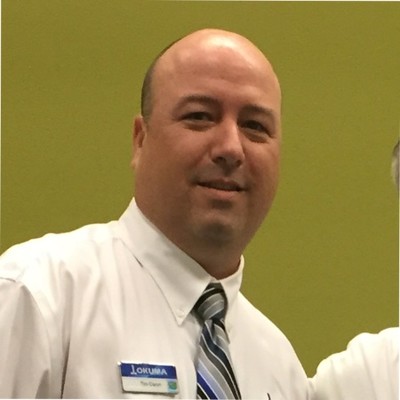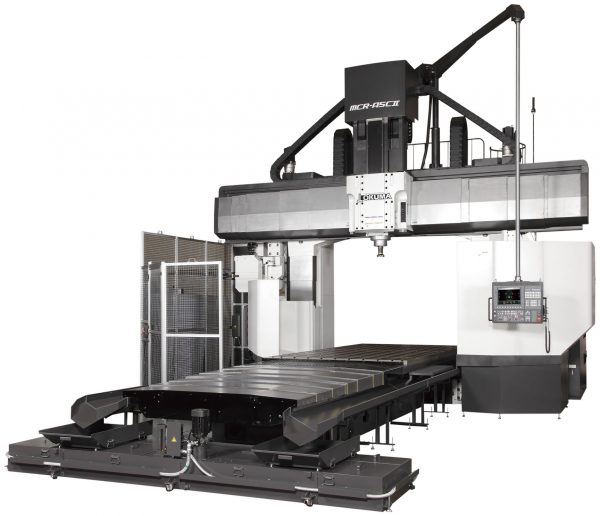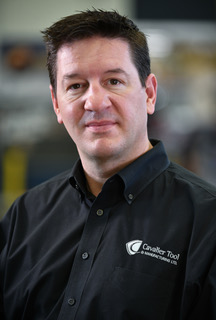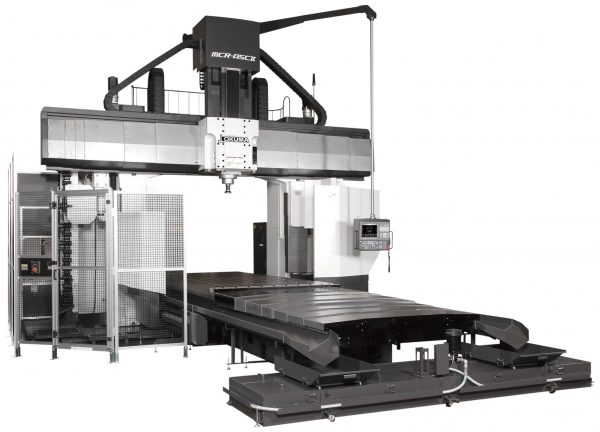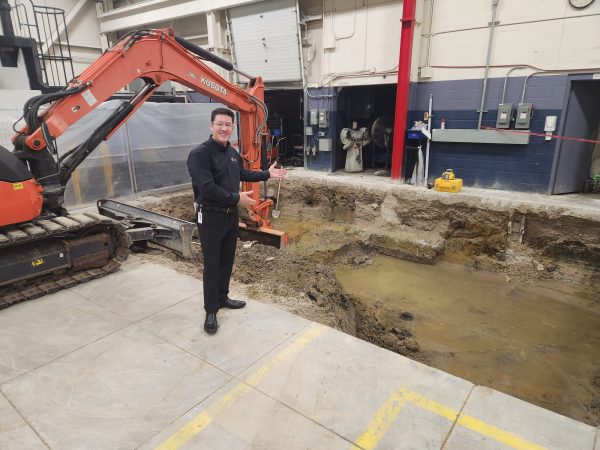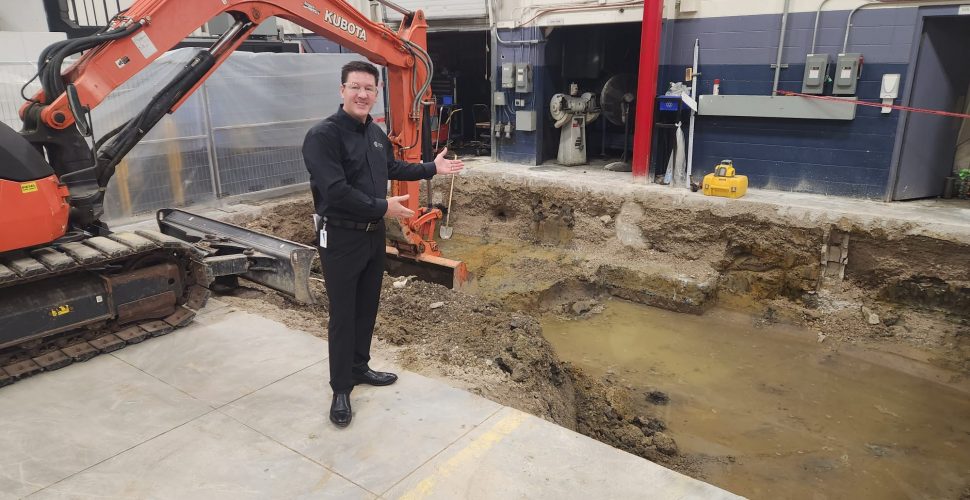
Staying ahead of curve means quality, precision and speed
Published Jan 31, 2024 | Posted in Manufacturing, News, Students, Technology
More automation. More accuracy. More efficient.
The Cavalier Way.
Choosing the right equipment is a key part of our success formula: People, Process. Equipment.
Tim Caron, Area Sales Manager with EMEC Machine Tools Inc (and former Sales Engineer with Okuma American Corp.) says Cavalier is able to produce molds as fast as they do because of the equipment they buy.
Tim Caron, EMEC Machine Tools
“They produce molds quickly without taking anything away from the integrity of the mold, or the quality,” says Caron.
“Cavalier does a lot of things differently and a large part is due to the machines they buy and they buy them for a specific reason.”
The latest piece of equipment is the new Okuma Bridge Mill MCR-A5CII, installed at Plant 2 ensures Cavalier can deliver top notch tools every time.
“We can now use this 2-D machine to open up capacity on our 3D equipment,” says Cavalier President Brian Bendig. “ It means more capacity on our finishers – and we know more accuracy on our 2D work. With automation on the Okuma Bridge Mill, we also can use our operators in other areas that are better for the overall tool production. “
Brian Bendig, President & CEO
Equipment and upgrading machines is a foundation of what provides success for Cavalier – and it’s a reason so much of the tools built can be done with high accuracy, with top notch speed and of course a quality expected in manufacturing.
Bendig flew to Japan and toured the Okuma facility 8 years ago and it set in motion a relationship that allowed for Cavalier to build on the expertise of Okuma – coupled with Bendig’s passion for leaving no stone unturned when it comes to checking out new equipment.
“I tend to go to all facilities before I buy anyone’s equipment. It allowed me to walk the assembly lines, I got to see the assembly, the quality control, all the things that make what we do so valuable for our customers. Equipment – and the right equipment – is valuable.
“ I was able to understand their build philosophies, and could then get a good appreciation for what that means to Cavalier. They are certainly not cheap. So think of Okuma like maybe Lexus. Toyota is good, Lexus is better. Both are Japanese made.”
The new Okuma Bridge Mill is an investment in how Cavalier will continue to serve customers by increasing speed, accuracy and precision.
“Now can we do more, produce more and still remain competitive. It is all about an automated solution,” says Bendig.
It’s also part of the Cavalier Experience -each piece of equipment in all of our three shops is used to improve on everything we do.”
On the Okuma website it describes The Okuma Bridge Mill – MCR-A5CII-n as “ a high-speed double column machining center with compact auto-loading/unloading attachments for true 5-sided machining in a compact footprint. The solid double column construction ensures greater rigidity and closer tolerances, making this machine well-suited for the efficient machining of general parts and rapid die/mold jobs.”
Some other highlights:
- Space-saving auto attachment changer (AAC) – 5-face machining with various attachment heads
- Ram-type spindle head – solid rigidity for horizontal spindle applications
- OSP suite – features you want with preloaded apps
- High power main spindle – maximum accuracy and dimensional stability
- Rigid and accurate guide system – for high quality machining
Bendig invests time and resources into ensuring Cavalier remains ahead of the curve.
“You need complementary equipment – and advanced and sophisticated equipment. The more operations you can do the better and avoid jumping around from machine to machine,” he says. “You set it up one time and you do many operations on one machine, one setup It reduces risk and errors, which is what we are known for. Quality, precision and speed – and hence our mantra of people, process and equipment”.
This machine is also a twin.
You will notice a lot of Cavalier’s machines are duplicates. This allows Cavalier to program to an environment that creates efficiencies and scheduling flexibility. This creates throughput efficiencies that can be up to 25 to 30% faster, sometimes as much as 5 times faster!
“ And it’s a very accurate 2D machine so there’s less demand on the operator,” says Bendig.
Beyond this one machine, Cavalier knows investing in new equipment in the world of mold making in manufacturing is crucial for present and future growth.
Caron says Bendig doesn’t just buy machines – he wants to know how they work and he asks a lot of questions.
“He needs to see it before he believes it. “
Bendig purchased his first Okuma Genos M560 Vertical Machining Centre in 2014
Then he went on to purchase a lathe LB3000 EX II MYW – in 2020 – a Turning machine- horizontal with spindle on both sides – and then a twin to that.
Caron said he noticed how Cavalier had a lot of round stock on the floor, ready to be sent out so a decision was made to purchase the lathe.
“It was a big leap,” says Caron, “ People maybe at the time asked, what the heck are you doing. But they aren’t saying that now.”
According to the Okuma website, the LB3000 EX II is the largest horizontal lathe in the “Affordable Excellence” collection of Okuma machines, and is built on their Thermo-Friendly Concept to ensure minimal thermal growth, and slanted box bed construction and translates to unsurpassed quality and rigidity.
It is equipped with Okuma’s high-power, high-torque PREX motor; this machine delivers high-quality machining from heavy- to high-speed cutting. The operator-friendly, open-architecture OSP-P control makes this machine not only easy to operate, but also to integrate with other peripheral equipment. A wide variety of bed lengths, bore sizes, and options—including live tooling, sub-spindle, and Y-axis—means there is a configuration to meet any shop’s requirements.”
Caron says this recent purchase of the second Okuma Bridge Mill MCR-A5CII- was a way to find a machine that could do everything in one set up and also confirmed the trust Cavalier and Bendig had placed in Okuma and EMEC.
And Bendig had one more request, laughs Caron.
Brian Bendig, at Plant 2
“The machine was built to go on the floor. But Brian came to me and said, I am going to put it in a pit. “And I said, no you’re not… ,” says Caron.. “Then Brian told me to go figure it out. “
It then became a team approach to make it work.
Now the operators are able to walk onto it. “So the function is there but listen, 90% was because it would look cool. “
Caron says Cavalier also will sit down with us and figure things out. They take ownership of everything.. Cavalier is a different customer that we can trust.
Bendig also is well aware of how technology scares people. “When you buy up on technology it’s not always a comfortable thing. You have to understand it. You have to study the pros and cons and ask, ‘ what will it do for me? How am I better tomorrow than I am today? “
Bendig says it’s also difficult looking into the future technologies because will they or will they not take off?
Cavalier has also built a big business around gun drilling – but has also learned you don’t have to use gun drills to drill deep holes.
“There’s still a place for it and there’s an advantage, but we do a heck of a lot of our drilling without ever touching a gun drill. Technology has changed and we’ve had to have machines that complement that growth and technology and new direction.”
Hence, why Cavalier also works with boutique machine builders that specialize in certain types of equipment and also offer top notch service.
“We also like partners. Partners are important because when someone understands what we’re doing and how we’re doing and then when a product shows up, or a new technology shows up, they’re quick to run it and show it to us because they can see where the application makes sense,” says Bendig.
“We also tend to buy two or three of the same model or make of the machine since it’s easier for training and for servicing.”
And Bendig says they understand what is important to their customers.
“We’re metal removal experts, and the customer doesn’t care if we use a hammer and chisel or the best piece of equipment,” says Bendig.
However, Cavalier has chosen to go with quality and longevity. “If you buy a really good state of the art piece of equipment, you have the advantage of speed, technology and accuracy. You then maintain it and you have a good piece for 10 years and when you sell it, you sell it for half of what you bought it for. It’s a much better investment and a quicker way to the finish line.”
Bendig says it also shows confidence to customers because you know you have speed, accuracy and quality.
Some other examples and reasons for investing in equipment include:
Enhanced Precision and Quality:
- Example: Upgrading to advanced CNC machining equipment like The Okuma Bridge Mill.
- Reason: New equipment often comes with improved precision and automation, leading to higher-quality molds. This, in turn, reduces defects in manufactured products and enhances the overall quality of output.
Increased Production Efficiency:
- Example: Implementing high-speed machining technology.
- Reason: Modern equipment is designed for efficiency, allowing for faster production cycles. This results in increased throughput and the ability to handle larger order volumes, contributing to present and future growth.
Diversification of Product Offerings:
- Example: Investing in multi-axis machining centers.
- Reason: Advanced equipment enables the production of complex molds for diverse product designs. This flexibility allows companies like Cavalier to cater to a broader range of industries and expand their product offerings, thereby increasing market share.
Cost Savings in the Long Run:
- Example: Upgrading to energy-efficient and automated equipment.
- Reason: While the initial investment may be high, modern equipment often comes with energy-efficient features and automation capabilities that result in long-term cost savings. Reduced COGS contributes positively to the company’s bottom line and sustainability.
Adaptation to Industry 4.0:
- Example: Implementing IIoT (Industrial Internet of Things) in mold making processes.
- Reason: Industry 4.0 technologies enhance connectivity and data exchange between equipment and systems. This enables real-time monitoring, accurate scheduling, predictive maintenance, and improved decision-making. Embracing these technologies positions the company at the forefront of industry trends, ensuring competitiveness and future growth.
Bendig says investing in new equipment is essential for staying competitive, meeting evolving industry demands and being able to keep growing to meet the needs of Cavalier customers.
“We stand by the commitment to change the way mold making is done – and we are always looking for ways to do it better and quicker while still maintaining the quality we are known for.”
The Cavalier Experience!

